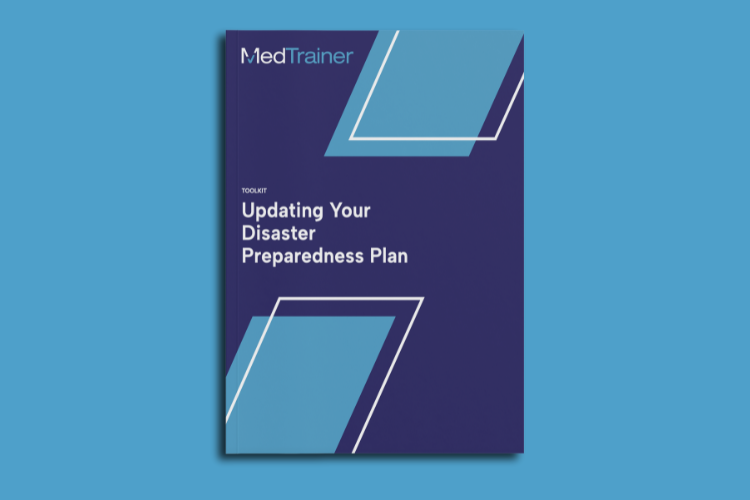As modern urgent care breaks boundaries and improves accessibility, compliance in urgent care centers is vital and must evolve to keep pace. Bridging the gap between primary care and hospital emergency rooms means you likely have a diverse team offering a broad range of services in a fast-paced environment.
This brings challenges that are unique for compliance in urgent care centers. Keep reading for a glimpse at the most common compliance issues within urgent care centers and how advancements in technology make it easier.
See how MedTrainer helps urgent care centers.
HIPAA Regulations in Urgent Care Centers
The Health Insurance Portability and Accountability Act (HIPAA) pertains to the privacy and security of patient health information. Some of the most common HIPAA violations in urgent care centers include:
- Unauthorized Access: Employees accessing patient information without a legitimate reason.
- Unsecured Records: Leaving patient charts, computer screens with patient data, or other forms of PHI in view of unauthorized individuals.
- Lack of Employee Training: Employees who aren’t properly trained on HIPAA regulations can unintentionally cause violations.
- No Business Associate Agreements: Failing to have proper agreements in place with vendors or third parties that handle PHI on behalf of the urgent care center can lead to violations.
OSHA Regulations in Urgent Care Centers
The Occupational Safety and Health Administration (OSHA) establishes and enforces protective workplace safety and health standards. Some of the most common OSHA violations in urgent care centers include:
- Bloodborne Pathogens: Failure to implement an exposure control plan or not updating it annually — including not offering hepatitis B vaccinations or not providing proper training.
- Hazard Communication: Not maintaining a proper written hazard communication program, failing to label chemical containers appropriately, or not providing training.
- Emergency Action Plan: Not having a written emergency action plan in place or not training employees on emergency procedures.
- Respiratory Protection: Not providing respiratory protection when necessary or failing to develop and implement a respiratory protection program.
Here’s what you need to know for an OSHA inspection.
CMS Regulations in Urgent Care Centers
The Centers for Medicare and Medicaid set and enforce standards for healthcare providers that receive reimbursement from Medicare and Medicaid. Some of the most common CMS violations include:
- Documentation Issues: Failing to maintain accurate, complete, and timely patient records, or not ensuring that patient care services are adequately documented.
- Licensure and Certification: Not ensuring that all professional staff maintain up-to-date licenses and certifications in their respective fields.
- Infection Control: Failing to follow proper infection control practices, such as hand hygiene, equipment sterilization, and isolation protocols.
- Emergency Procedures: Lack of clear emergency procedures or not having the necessary equipment on hand to deal with emergencies that may arise.

Get checklists, templates, and ideas to update your emergency preparedness plan.
Accreditation for Urgent Care Centers
There are several accreditations available for urgent care centers, with the Urgent Care Association (UCA) accreditation program being the most common. UCA accreditation helps organizations stay in-network with select payers while also elevating the level of patient care. The standards vary based on accrediting agency, but these are common elements required:
- Governance and administration
- Scope of care
- Patient care processes
- Quality improvement
- Health record management
- Facility and environment
- Human resources
- Patient education and communication
- Health and safety
- Risk management
- Peer review and credentialing
4 Ways Technology Can Streamline Compliance in Urgent Care Centers
As you can see from the most common violations, maintaining accreditation and regulatory compliance in urgent care centers requires solid documentation, tracking, and training. Luckily, these are areas where technology can streamline this process, taking some of the burden off your plate. Here’s how:
1. Online Training
A learning management system (LMS) makes it easier to complete training from anywhere without juggling schedules — and everything is automatically tracked and ready for a survey. If you’re using a healthcare-specific LMS, the courses are likely created with healthcare setting-specific scenarios and meet all the stated regulatory requirements. It’s easy to assign training to multiple roles, departments, and locations so you can ensure everyone is completing the same high-quality training. If an incident happens in your facility that requires additional training as a continuous improvement action, it’s much easier to assign and verify completion with an LMS.
2. Automated Reminders
With so many compliance details, it’s easy to forget that the HIPAA policy needs to be updated in October and it’s nearly impossible to manage license expiration dates for every single provider in your organization. Calendar reminders are great, but there has to be an easier way, right? Online compliance platforms have automated these reminders to help keep busy professionals on track.
- Policy Updates: Get an automated reminder 60 days before a policy is set to expire or before a security risk assessment must be completed.
- Training Completion: Admins can get a reminder when annual training needs to be assigned and once assigned, employees will receive reminders until the training is complete.
- Credentialing Documents: When you complete credentialing or recredentialing for a provider and log the date, it will trigger automatic reminders 120 days before the next expiration.
3. Centralized Documentation
Failing to have written policies and procedures or not regularly updating them is one of the most common pitfalls for urgent care centers when it comes to compliance. Organizing all compliance documents in one online location makes it easy to spot when a policy needs to be updated and to ensure you have everything you need for an upcoming inspection. Naming your files according to the regulatory or accreditation standard makes compliance in urgent care centers even easier. With electronic signatures you can easily show versions, approvals, and staff acknowledgements all in one place.
Get more tips from accreditation surveyors in this on-demand webinar.
4. Real-Time Reporting
We all know that if it isn’t documented, it didn’t happen. If you can’t show accreditation and government inspectors tracking of training completion, policy approvals, and more, then you’ll end up with one of the most common violations mentioned earlier in this article. An online compliance platform automatically tracks everything and real-time reports are available for you to ensure compliance and to show inspectors. Customizing reports with the information that you know will be required in a survey will make things much easier for you and the surveyor.
Increase Compliance Efficiency With an All-In-One Platform
It’s crucial for urgent care centers to be aware of compliance regulations and have comprehensive plans and training in place to ensure operation within legal and ethical boundaries. Regularly reviewing and updating compliance protocols, attending training sessions, and consulting with legal experts can help maintain compliance in urgent care centers and offer the best care to their patients.
Want to see how technology could help you maintain compliance in your urgent care center? Reach out to MedTrainer.
